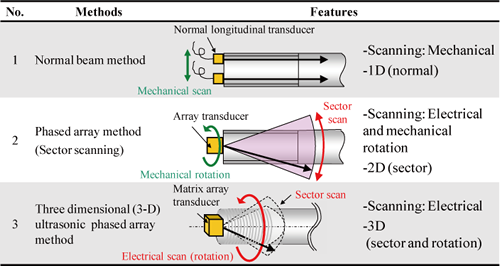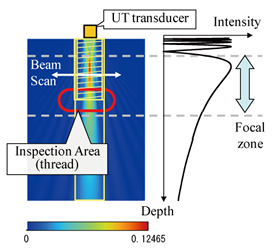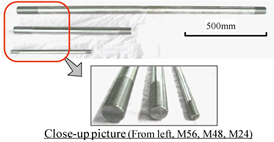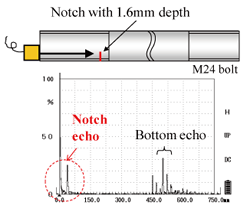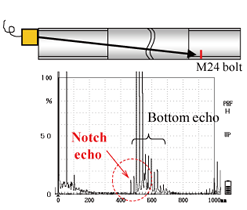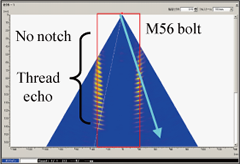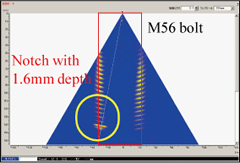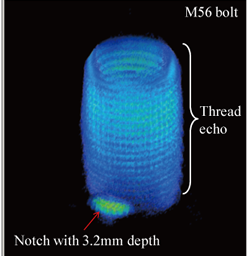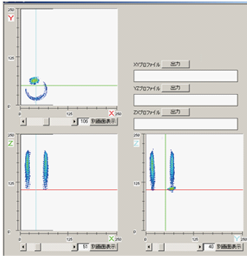| Vol.2 No.1 |
||||||||||||||||
| Vol.2, No.2, NT23
|
||||||||||||||||
Ultrasonic integrity assessment for foundation bolts of nuclear power plants |
||||||||||||||||
| Hitachi, Ltd. Hitachi-GE Nuclear Energy, Ltd. The Tokyo Electric Power Co, Inc. |
||||||||||||||||
KEYWORDS: |
||||||||||||||||
| 1. Technical summary | ||||||||||||||||
| Classification (I: Inspection, II: Repair, III: Replacement, IV: Preventive Maintenance, V: Others) | ||||||||||||||||
|
Integrity assessment for nuclear power plant major components is essential for aging management and seismic safety evaluation. Foundation bolts are support structures important to structural integrity. Therefore ultrasonic testing (UT) as volumetric inspection method is effective for integrity assessment of the bolts. The foundation bolts in nuclear power plants have various lengths and diameters, and one end of the bolt is embedded in concrete. An ultrasonic transducer is coupled to the end of the bolt (Fig.1). Aperture of the transducer is optimized based on length and diameter of the bolt. Ultrasonic beam is scanned for covering inspection area, both threads at the top and the bottom. Validity of conventional UT method (normal beam longitudinal wave technique) and phased array UT methods with different beam scanning (2-D and 3-D phased arrays), listed in Table.1, is confirmed through experiments of foundation bolt test pieces (Fig.2). Table.1 Ultrasonic testing methods for bolt inspection
Fig.1 Ultrasonic bolt inspection
Fig.2 Test pieces of foundation bolts | ||||||||||||||||
| 2. Scope | ||||||||||||||||
|
(1) Components: Foundation bolt (length: 0.5-2.0 m, diameter: 20-60mm). |
||||||||||||||||
| 3. Features | ||||||||||||||||
Fig.3 Results of longitudinal normal beam method (test piece)
Fig.4 Results of two-dimensional phased array method (test piece)
Fig.5 Results of three-dimensional phased array method (test piece) |
||||||||||||||||
| 4. Examples of Application | ||||||||||||||||
|
||||||||||||||||
| 5. Reference | ||||||||||||||||
|
||||||||||||||||
| 6. Contact | ||||||||||||||||
| Japan Society of Maintenology (ejam@jsm.or.jp) | ||||||||||||||||






